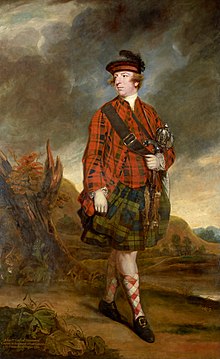
Back جون موري دونمور الرابع Arabic جون موراى دونمور الرابع ARZ John Murray, 4. jarl af Dunmore Danish John Murray, 4. Earl of Dunmore German John Murray Dunmore Finnish John Murray (4e comte de Dunmore) French John Murray, IV conte di Dunmore Italian ジョン・マーレイ (第4代ダンモア伯爵) Japanese John Murray (4. jarl av Dunmore) NB Мюррей, Джон, 4-й граф Данмор Russian
The Earl of Dunmore | |
|---|---|
 Portrait by Joshua Reynolds, 1765 | |
| Governor of New York | |
| In office 1770–1771 | |
| Monarch | George III |
| Preceded by | Sir Henry Moore |
| Succeeded by | William Tryon |
| Governor of Virginia | |
| In office 1771–1775 | |
| Monarch | George III |
| Preceded by | William Nelson |
| Succeeded by | Patrick Henry |
| Governor of the Bahamas | |
| In office 1787–1796 | |
| Monarch | George III |
| Preceded by | James Edward Powell |
| Succeeded by | John Forbes |
| Personal details | |
| Born | 1730 Taymouth, Fearnan |
| Died | 25 February 1809 (aged 78–79) Ramsgate, Kent |
| Resting place | St Laurence's Church, Ramsgate |
| Signature | |
John Murray, 4th Earl of Dunmore PC (1730 – 25 February 1809) was a Scottish colonial administrator who served as the governor of Virginia from 1771 to 1775.[1] Dunmore was named governor of New York in 1770. He succeeded to the same position in the colony of Virginia the following year after the death of Norborne Berkeley, 4th Baron Botetourt. As Virginia's governor, Dunmore directed a series of campaigns against the trans-Appalachian Indians, known as Lord Dunmore's War. He is noted for issuing a 1775 document, Dunmore's Proclamation, offering freedom to slaves who fought for the British Crown against Patriot rebels in Virginia. Dunmore fled to New York after the burning of Norfolk in 1776 and later returned to Britain. He was Governor of the Bahamas from 1787 to 1796.
- ^ "John Murray, fourth earl of Dunmore (ca. 1730–1809)". www.encyclopediavirginia.org. Retrieved 23 October 2020.